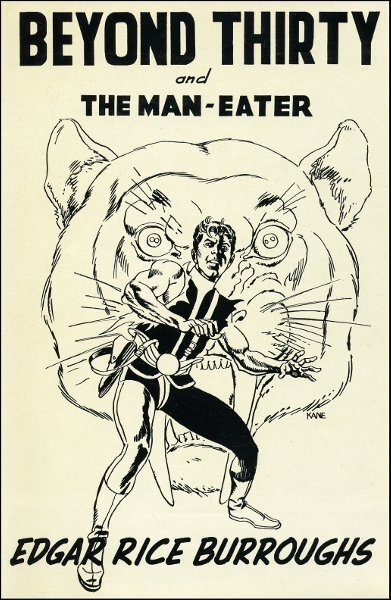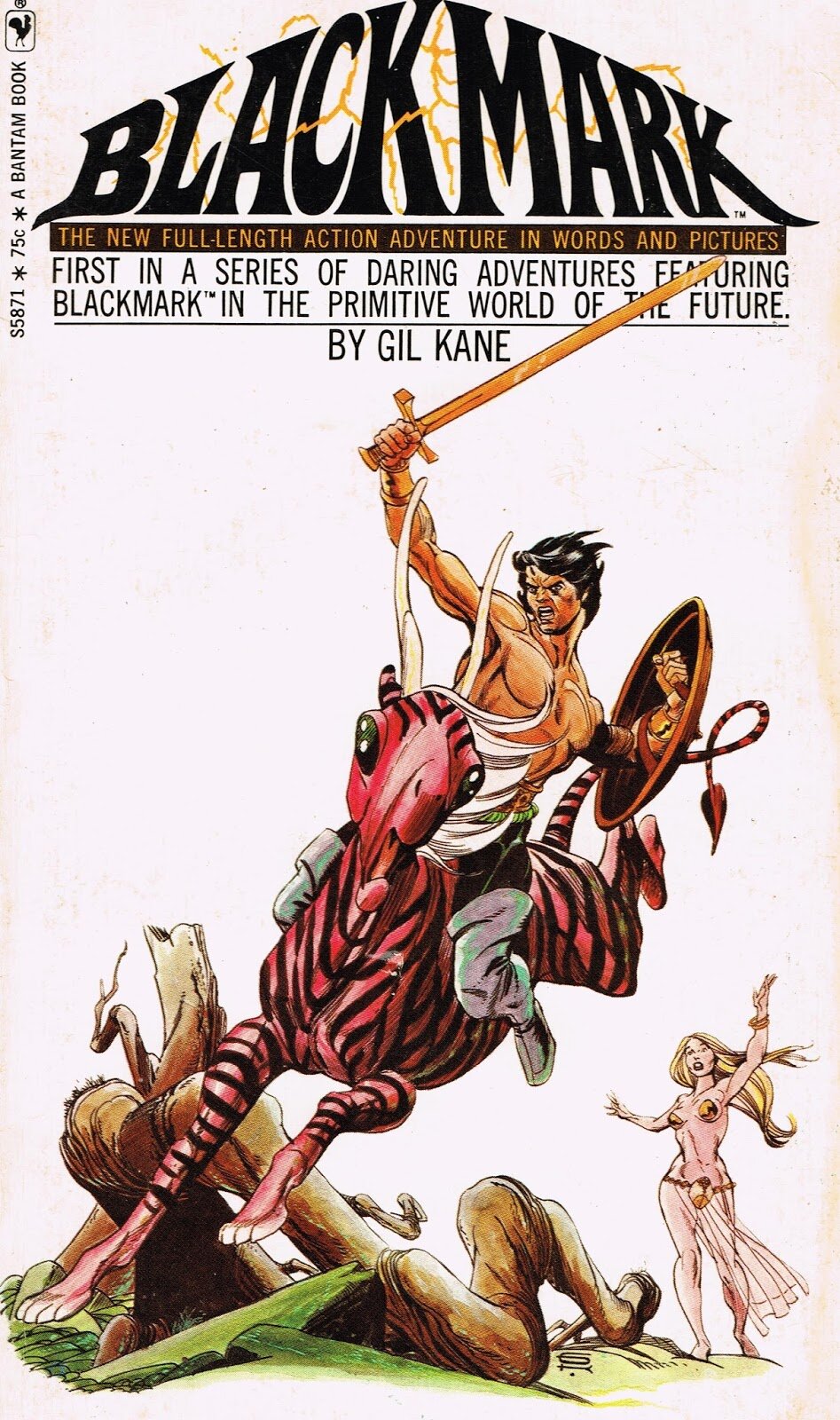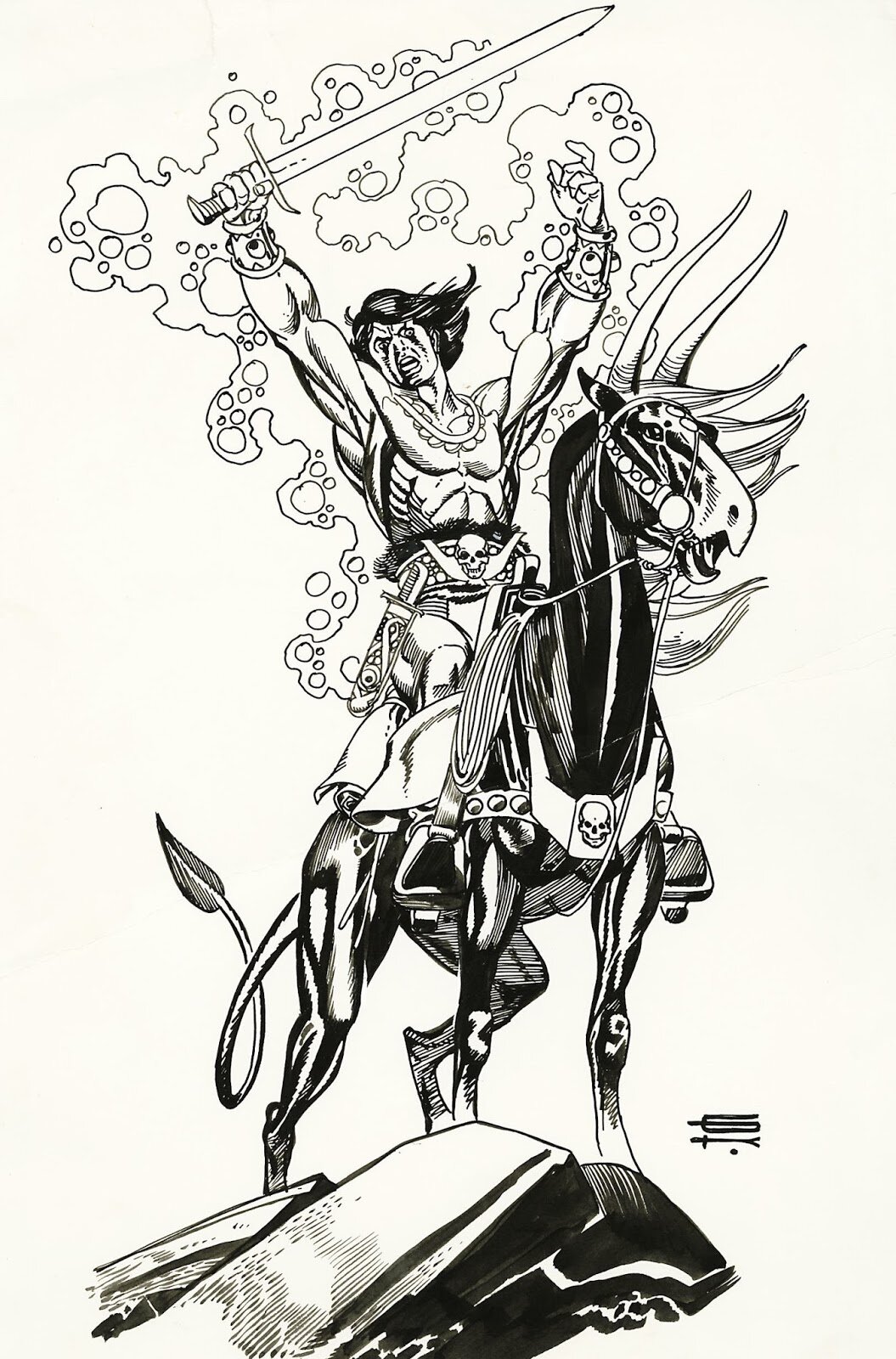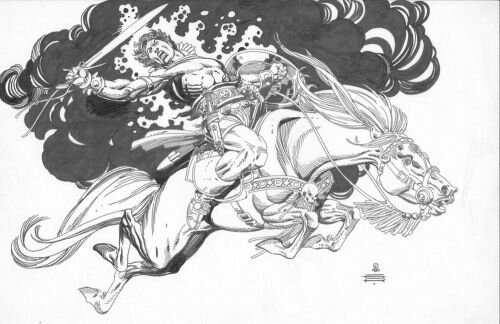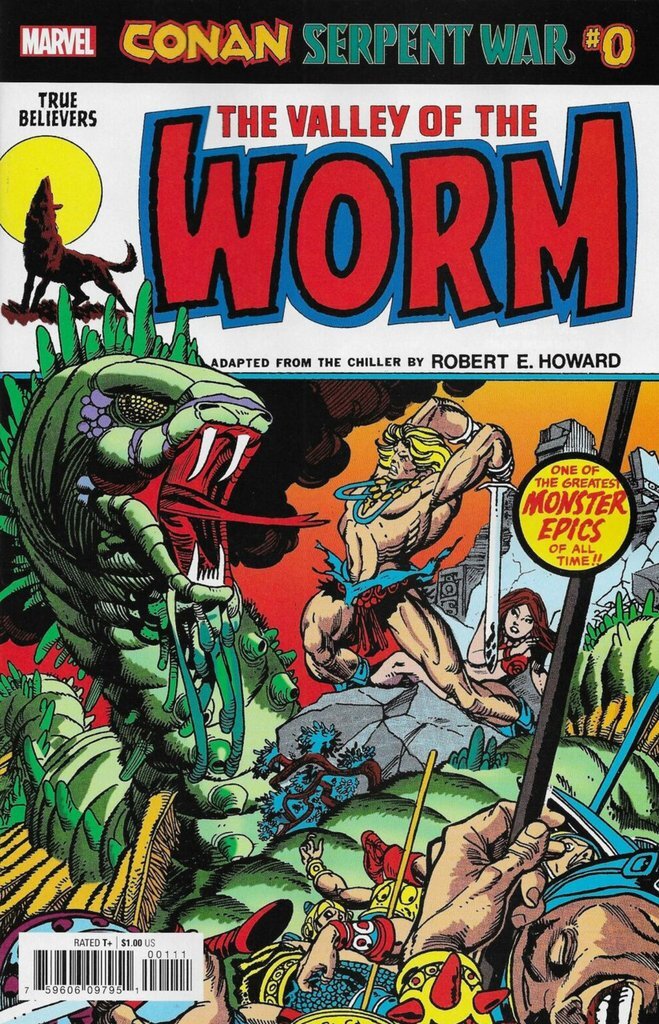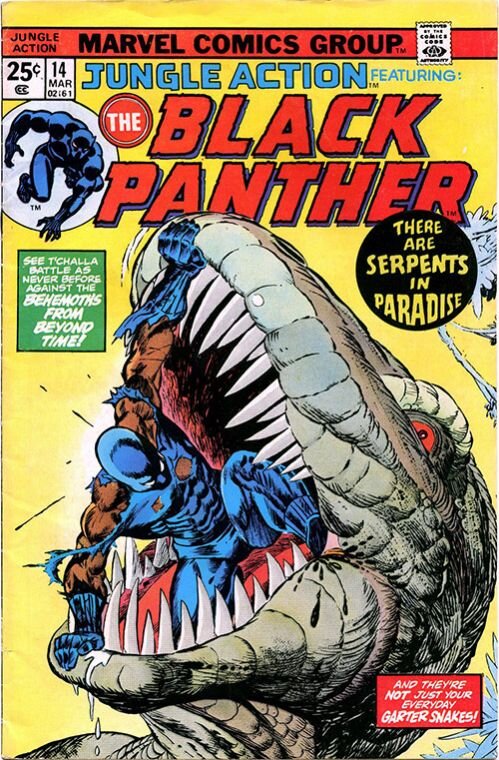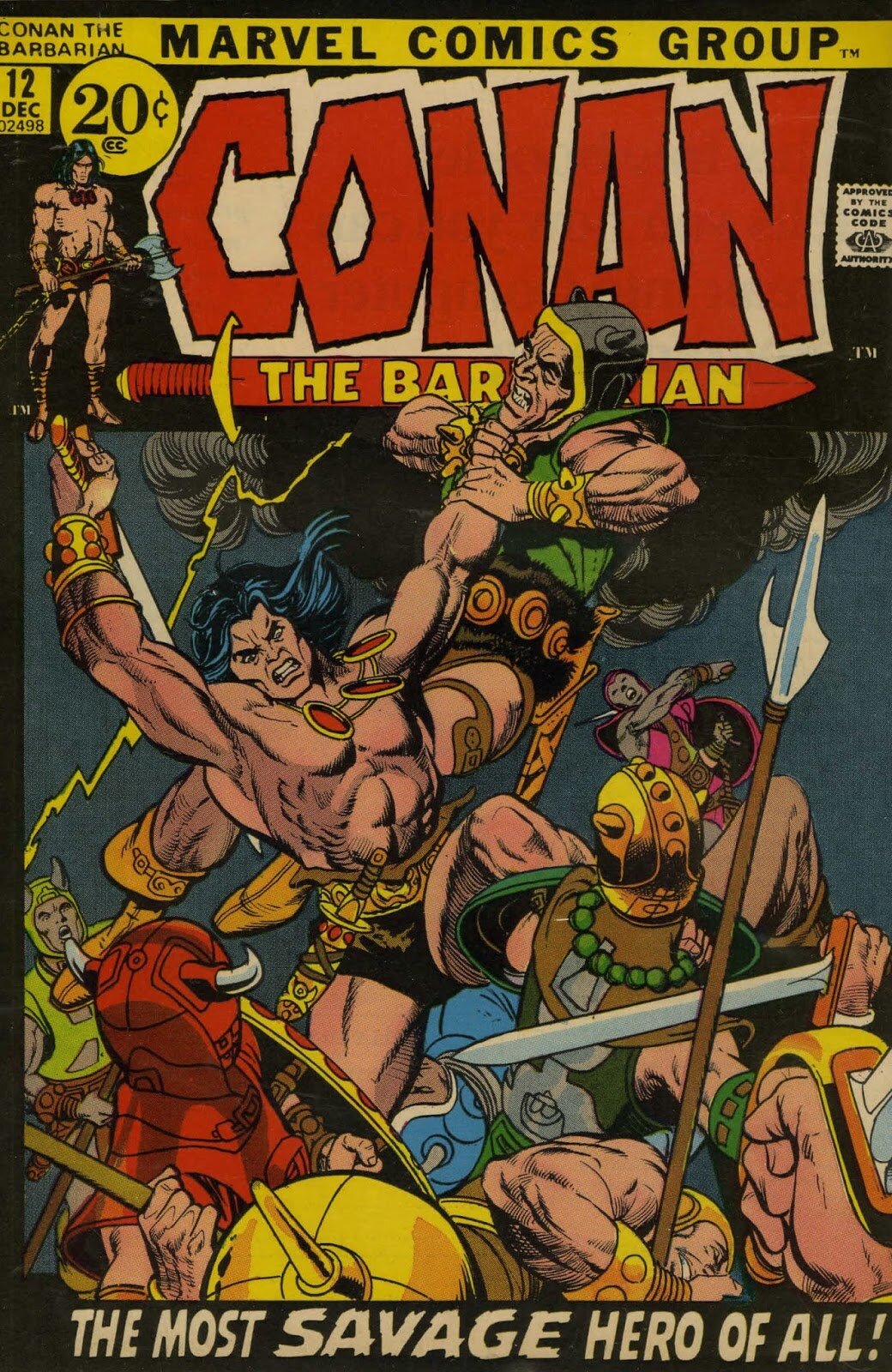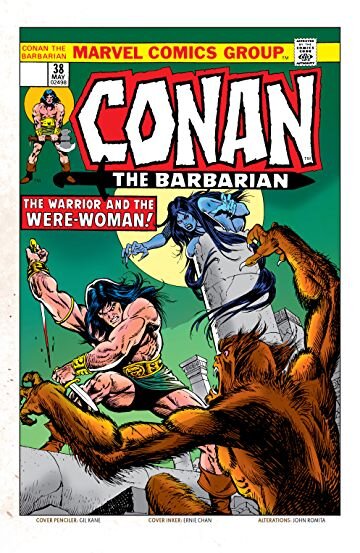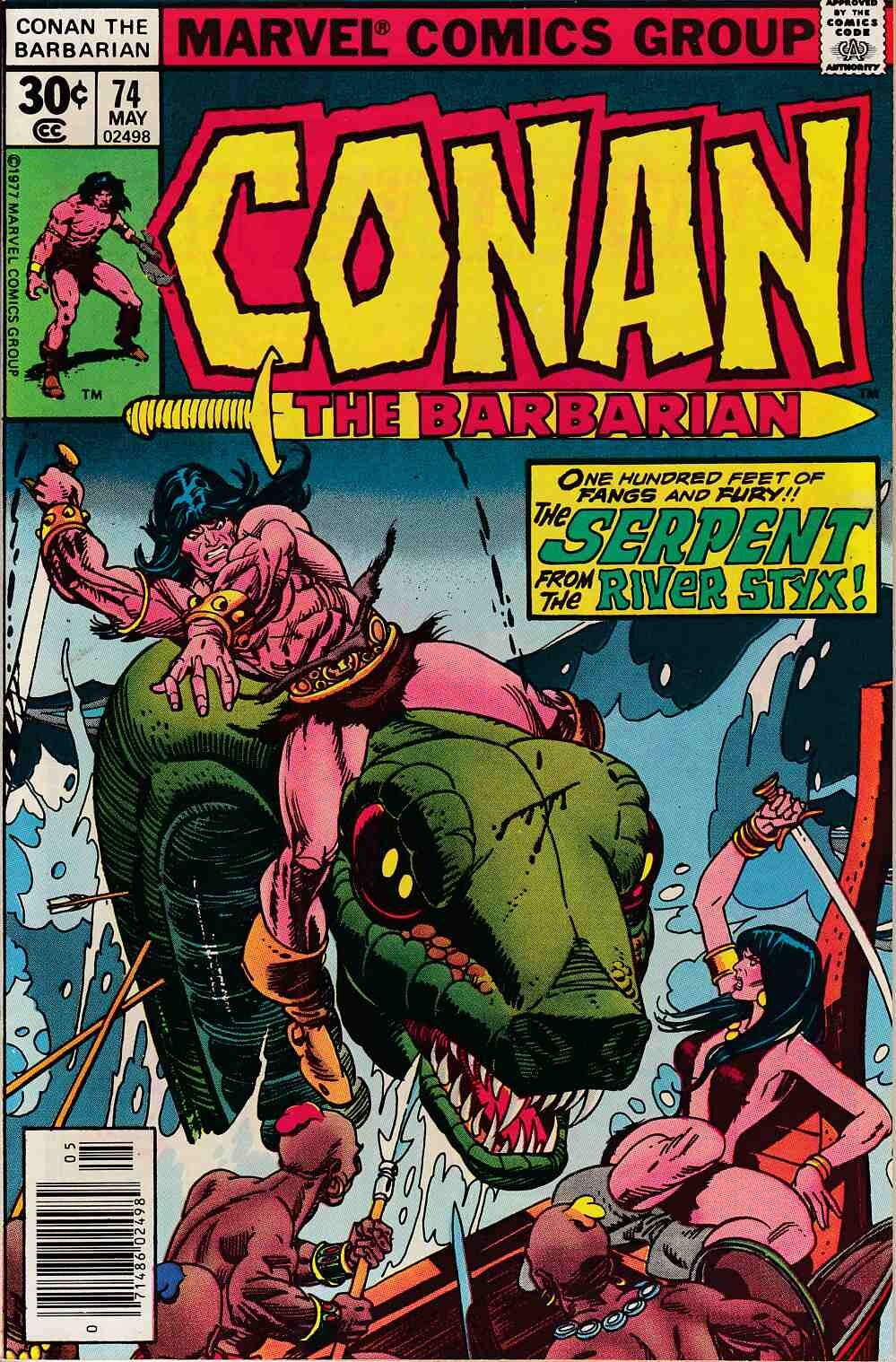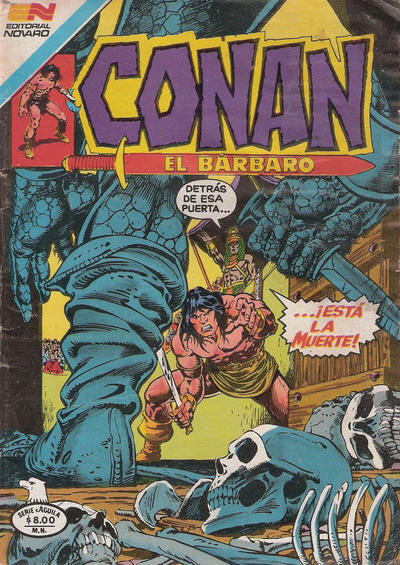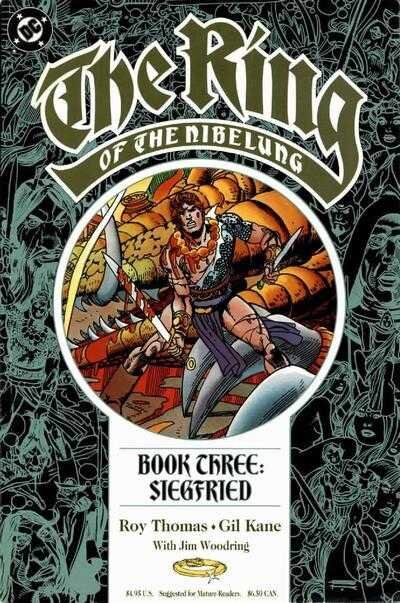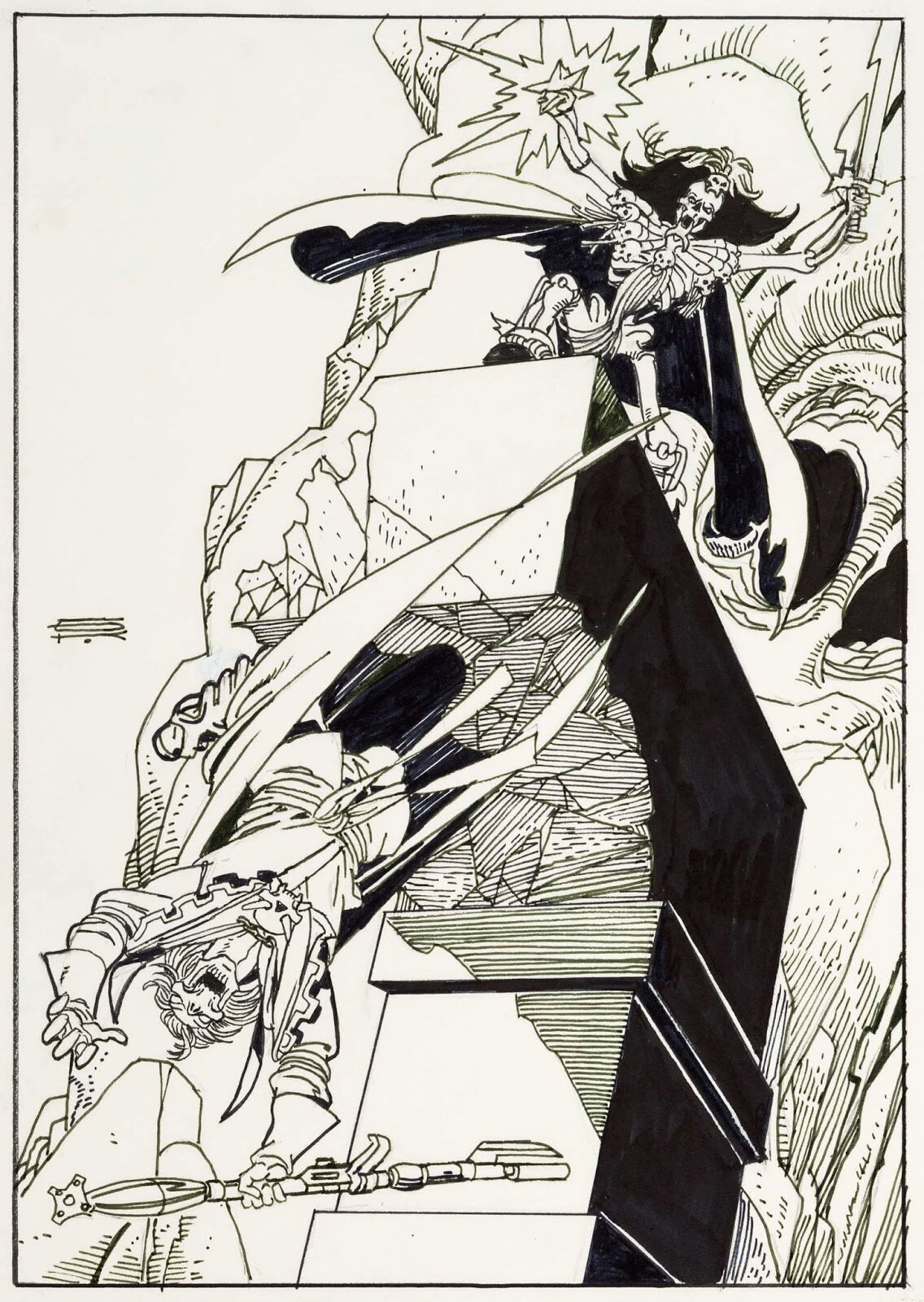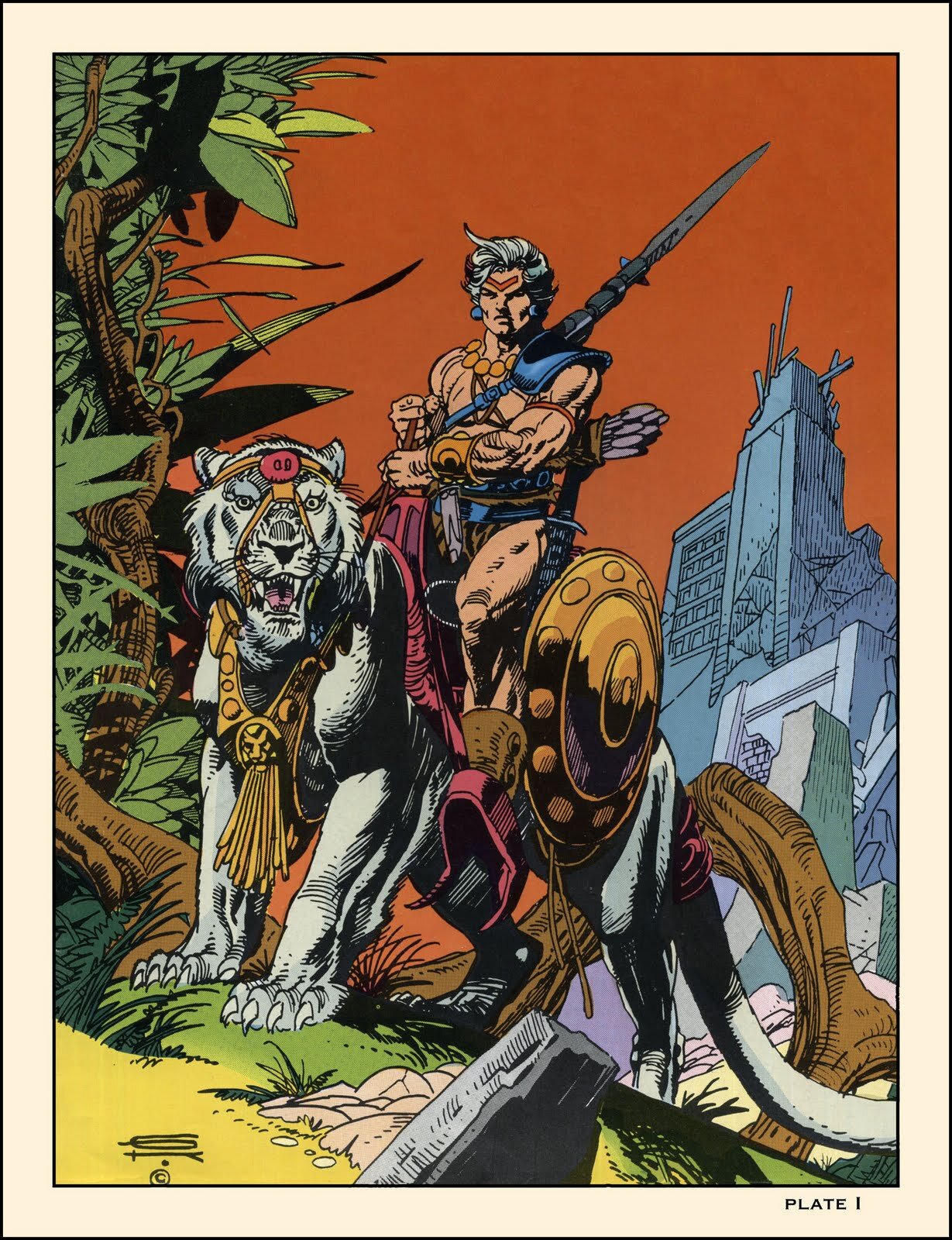Gil Kane -- 20 Years Gone
Gil Kane’s self-portrait, alongside Blackmark, the hero of the first sword-and-sorcery graphic novel in 1971.
Gil Kane died on this date in 2000. He was an artistic bad-ass. Let’s get that out of the way. He also depicted his figures in wildly exaggerated poses and drew far too many covers with the reader looking up various characters’ noses. Let’s get that out of the way as well. The bottom line is that Gil was a lifelong fan of the Good Stuff, he created a body of classic work and he was—and remains—an influence on numerous comics artists.
I almost let this anniversary pass me by. However, I was researching an essay for the “REH Changed My Life” anthology from Rogue Blades and stumbled upon the fact that Gil Kane died exactly twenty years ago today. That should sadden the Readers of the DMR Blog. Whether you like his style or not, Gil made an indelible impact on sword-and-sorcery comics and numerous other comics somewhere within that Venn diagram.
The first-ever image of Conan that I saw—and it was bad-ass—was a Gil Kane cover for Conan the Barbarian #28. Conan, with only a knife, versus a giant, saber-toothed anthropoid. Gil made Conan look so lean n’ mean that I was betting on the barbarian. That cover was just one of a myriad which Kane crafted for the Conan comics in the 1970s, a hidden facet—in my opinion—of the Cimmerian’s runaway comics success in the realm of comics during that decade. More on that later.
Let’s backtrack a little… Gil Kane—born in 1926—began working in the comic book industry during the 1940s, but he really didn’t start making his mark until the late ‘50s when he co-created the Silver Age version of the Green Lantern at DC Comics alongside Gardner F. Fox. One has to wonder if, in some “What If?” universe, there might have been barbarian S&S comics during the ‘60s from DC with Fox scripts/plots and Gil Kane art.
A scan of the actual ad I saw in Captain Marvel #27. The first image of Conan I ever laid eyes on.
Gil was certainly a fan of sword-and-sorcery. He published his Blackmark S&S graphic novel—one of the first graphic novels ever—in 1971. As I recall—though I don’t have the reference to hand—he read the Gnome Press editions of Conan back in the ‘50s and was always passionate about getting S&S into comics. Another factoid I can’t verify at the moment is that Gil wanted the Marvel Conan the Barbarian gig but was too high-priced. He certainly stepped up to the plate right after Barry (Windsor-) Smith quit and before John Buscema took over.
That’s where I come in. Gil’s cover for Conan the Barbarian #28 was just one of several that Kane had already done for the series. Gil Kane would do many, many more over the course of the 1970s. I’m not sure, but I think he did more CtB covers during that period than John Buscema. In my opinion, the Gil Kane covers inked by Ernie Chan—as opposed to inks by Pablo Marcos or whomever—were the best. Gil, as I’ve noted, had a very “lean n’ mean” style. His characters possessed almost negative body-fat. Ernie Chan had a very dominant, florid style. Between the two—especially in the early years—the combo created a dynamic and happy medium. Gil Kane was, along with John Romita, the top cover Marvel cover artist in general during that era. He literally drew hundreds of Marvel covers in the 1970s. His covers were a “secret weapon” in the Marvel Conan arsenal.
Another cool project that Gil worked on in the ‘70s was the Star Hawks newspaper strip he co-created with Ron Goulart. Two hard-nosed “space cops” having interplanetary adventures. Check ‘em out. Around the same time, he did pencils for Marvel’s Warlord of Mars title. Gil was on a roll.
Gil would go on to do art—and even script stories for—Marvel’s Conan the Barbarian after Roy Thomas left the title. However, all of that was at least decade too late. Gil just didn’t quite have it in him to truly pull off top-notch work, at least for Conan. Around 1990, he and Roy Thomas adapted Wagner’s “Ring Cycle” and I thought that was pretty cool. Gil spent the rest of the ‘90s doing comics work here and there. He died in 2000, pretty much universally respected by the new generation of artists and ranked amongst the Silver Age immortals like Jack Kirby, Joe Kubert and Steve Ditko.
So, at the end of the day, here’s what I have to say about Gil Kane. His figure drawing was “lean n’ mean”. I think this was his compromise between drawing “puffy”/roided-out/over-muscled figures and drawing relatively less muscular characters with much less visual impact. This suited Conan well, who has too often been portrayed as some roided-out freak, as opposed to the rangy and agile killing machine that REH described. Kane’s style was also incredibly dynamic and he was fond of using unusual perspectives. Sometimes his figures were too dynamic and over-the-top, but it’s better to strive for that than the languid, torpid trash we get now for covers. His covers grabbed the eye of the viewer. They still do. One thing you could never, ever say about Gil Kane’s covers was that they looked like static photoshopped crap.
Frank Miller once said that Kane “helped me understand dynamic anatomy.” Miller’s Daredevil run—a series that Gil had worked on a just a few years before—clearly shows Kane’s influence. Howard Chaykin, whose contributions to S&S comic art are legion, ranks Gil Kane as possibly his greatest influence. John Byrne, whose S&S-adjacent artwork is underappreciated, in my opinion, has stated that Gil was “a big influence”. A relatively young pup, Mike Deodato, places Kane in his list of Top Ten influences. Tom Grindberg is also a fan. Barry Windsor-Smith admired Kane’s work while lamenting that Gil never really tried to break out of his self-imposed comics ghetto.
Miller. Chaykin. Byrne. Deodato. Grindberg. Windsor-Smith. Not a bad group to be admired by. Not at all.
Feel free to check out the gallery of Gil Kane art below.




